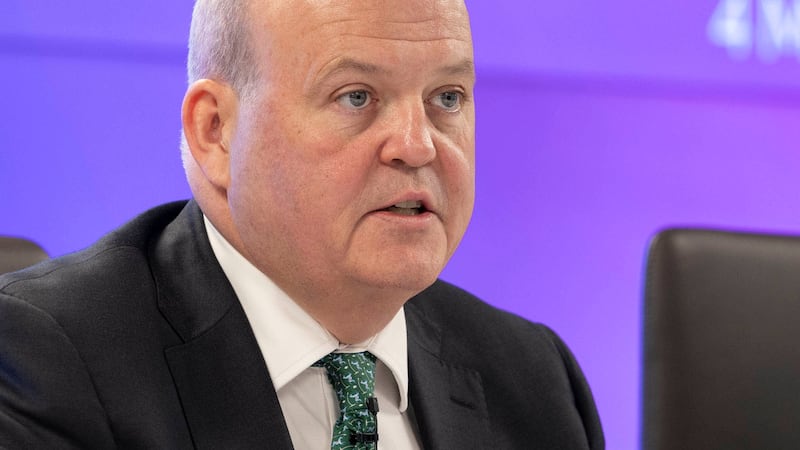Bank of Ireland, which has cut almost 500 jobs in the past year and a half, has signalled it will have to find more cost savings in the coming years as uncertainty over Brexit and lower-for-longer European Central Bank (ECB) interest rates threaten its ability to deliver on growth targets outlined a year ago.
At the investor day in June 2018, chief executive Francesca McDonagh outlined plans to increase the size of the group’s loan book by 20 per cent to €90 billion, shave €200 million of costs, to €1.7 billion, and boost its profitability by 2021.
Present challenges
Speaking to The Irish Times on Monday, after the bank revealed its first-half underlying profits fell 25 per cent to €376 million, Ms McDonagh said she may have to move beyond the cost-cutting target outlined last year, as Brexit and an extended period of low ECB rates “present challenges” to meeting loan and income growth targets. Banks’ lending margins are coming under pressure in a low interest rate environment.
While analysts estimated last year that Bank of Ireland would cut more than 2,000 jobs by the end of 2021, Ms McDonagh has only said that it will have “fewer people in the future”. She declined to say what additional cost savings would mean for headcount.
“Cost isn’t the only lever we have, but an important one,” Ms McDonagh said as the bank stuck to its key target of boosting profits to more than 10 per cent of the level of equity that shareholders hold in the bank. Return on tangible equity is a key profitability measure for banks.
Ms McDonagh noted that the bank released capital in the first half of this year by selling its UK credit cards portfolio and refinancing €300 billion of non-performing Irish buy-to-let mortgages on the bond market.
Loan target
Meanwhile, although the bank has said that its current 5.3 per cent non-performing loans ratio is within “touching distance” of its immediate 5 per cent target, it continues to consider loan sales and further bond market transactions, known as securitisation, to lower its ratio even further.
The bank’s profit decrease in the first half was largely down to the group setting aside €79 million to cover bad loans. By contrast, the group freed up €81 million of loan-loss provisions last year.
Bank of Ireland also set aside a further €55 million provision to cover the tracker mortgage scandal, bringing the total amount it has ring-fenced for the issue to €250 million. The additional charge covers additional refunds and compensation to impacted customers, operational costs and further money set aside for a likely Central Bank fine.
The bank warned that its net interest margin (NIM) – the difference between the average rates at which it funds itself and lends on to customers – is likely to fall by a “mid-to-high single digit” percentage point from 2.16 per cent seen in the first half. It had previously guided towards an increase in NIM to 2.2 per cent over the coming years.
Profitability
The bank expects loan-loss charges will equate to 0.2-0.3 percentage points of its loan book per annum between 2019 and 2021.
“Due to the challenging income environment and guidance on loan impairment charges, we are likely to reduce our 2020/2021 forecasts by high-single-digit percentage points,” said Davy analyst Diarmaid Sheridan, noting, however, that the bank remains committed to deliver in its medium-term target of having a return on tangible equity – a measure of profitability – of at least 10 per cent.
The bank said that its net lending grew by €1.2 billion over the course of the first six months of the year, with new lending of €7.7 billion. Some €1.2 billion of mortgages were drawn down by customers, delivering a 23 per cent market share for the bank.
Bank of Ireland’s common equity Tier 1 capital, a measure of its ability to withstand shock losses, rose by 0.4 percentage points to 13.6 per cent.
Shares in Bank of Ireland were down 4 per cent at €4.18 at 12.44pm in Dublin on Monday.














